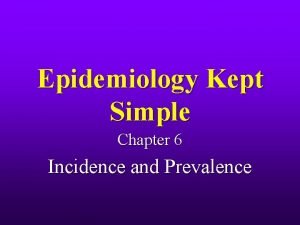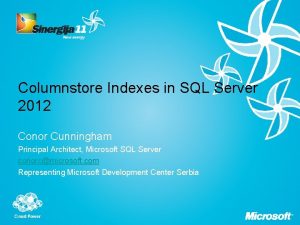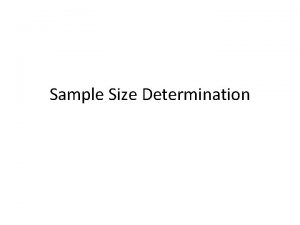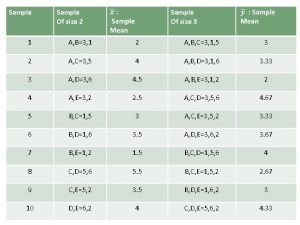SESSION 7 Sample Size for Incidence Rates Sample






- Slides: 6


SESSION 7 Sample Size for Incidence Rates

Sample Size for Incidence Rates (Counts) § Incidences rates (a. k. a counts) are a study outcome where measuring rate of event per unit time § Traditional methods were normal approximations or Poisson model Source: R. Lehr (1992) Source: H. Zhu & H. Lakkis (2014) § Negative Binomial or Quasi. Poisson model increasingly popular § Sample Size methods for NB and Q-P being actively Source: Y. Tang (2015)

Negative Binomial Regression Example “On the basis of previous studies of fluticasone propionate–salmeterol combinations we assumed a yearly exacerbation rate with vilanterol of 1· 4 and a dispersion parameter of 0· 7. Thus, we calculated that a sample size of 390 assessable patients per group in each study would provide each study with 90% power to detect a 25% reduction in exacerbations in the fluticasone furoate and vilanterol groups versus the vilanterol only group at a two-sided 5% significance level” Source: MT Dransfield et al (2013) Parameter Significance Level (Two-Sided) Control Incidence Rate (per year) Rate Ratio Exposure Time (Years) Dispersion Parameter Power (%) Value 0. 05 1. 4 0. 75 1 0. 7 90%

n. Query Plans for Incidence Rate Add more options for Count Data Modelling • More complex Tang method for Negative Binomial inequality • Add methods for quassi-Poisson and more equiv/NI tables • Potential for exact or simulation approaches for two sample case • Additional options for one-sample and >2 type designs • Zero-inflated Poisson and Negative Binomial models • Zero-truncated Poisson and Negative Binomial models • Random-effects, CRT and mixed model approaches Feedback/Suggestions/Papers for methods very welcome

References Incidence Rates Lehr, R. (1992). Sixteen S‐squared over D‐squared: A relation for crude sample size estimates. Statistics in medicine, 11(8), 1099 -1102. Signorini, D. F. (1991). Sample size for Poisson regression. Biometrika, 78(2), 446 -450. Gu, K. , Ng, H. K. T. , Tang, M. L. , & Schucany, W. R. (2008). Testing the ratio of two poisson rates. Biometrical Journal, 50(2), 283 -298. Zhu, H. (2017). Sample size calculation for comparing two poisson or negative binomial rates in noninferiority or equivalence trials. Statistics in Biopharmaceutical Research, 9(1), 107 -115. Zhu, H. , & Lakkis, H. (2014). Sample size calculation for comparing two negative binomial rates. Statistics in medicine, 33(3), 376 -387. Tang, Y. (2015). Sample size estimation for negative binomial regression comparing rates of recurrent events with unequal follow-up time. Journal of biopharmaceutical statistics, 25(5), 1100 -1113. Tang, Y. (2017). Sample size for comparing negative binomial rates in noninferiority and equivalence trials with unequal follow-up times. Journal of biopharmaceutical statistics, 1 -17. Dransfield, M. T. , et. al. (2013). Once-daily inhaled fluticasone furoate and vilanterol versus vilanterol only for prevention of exacerbations of COPD: two replicate double-blind, parallel-group, randomised controlled trials. The lancet Respiratory medicine, 1(3), 210 -223.











